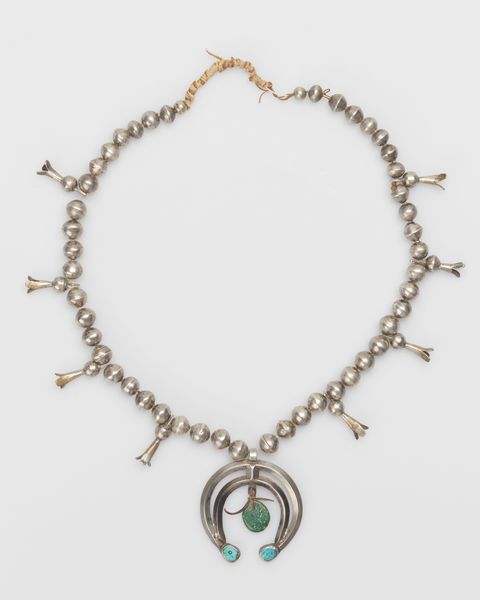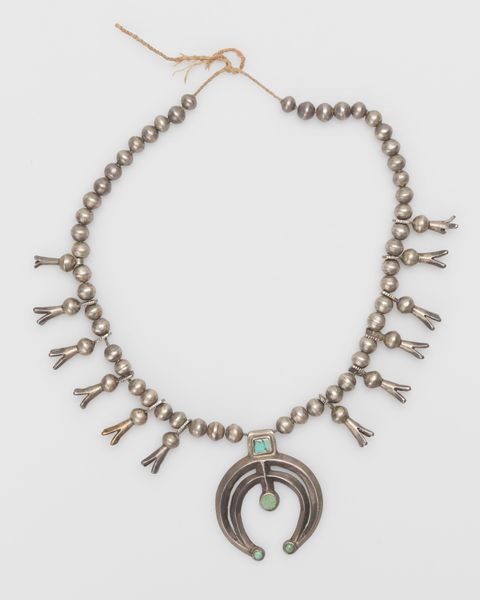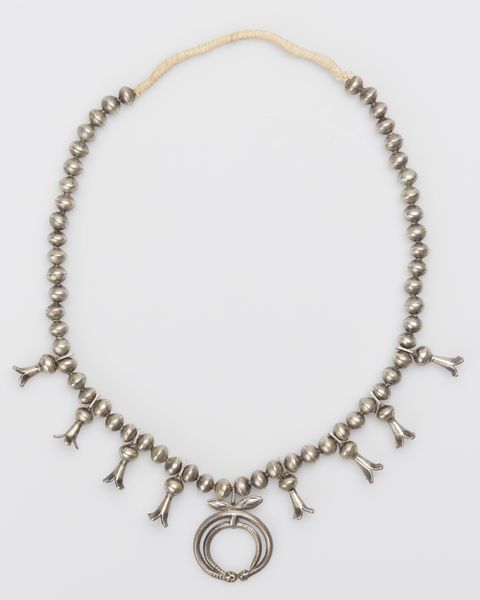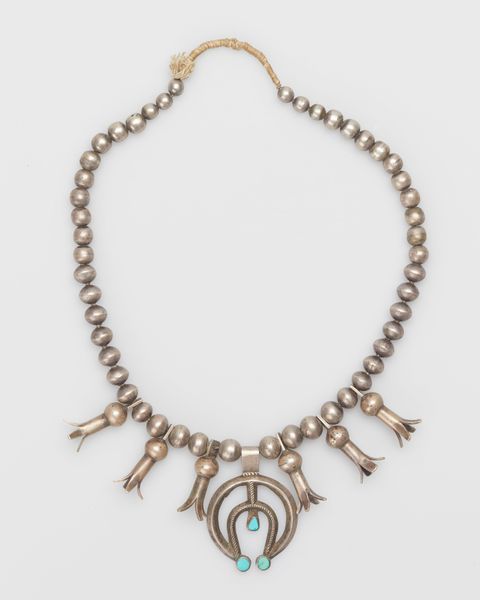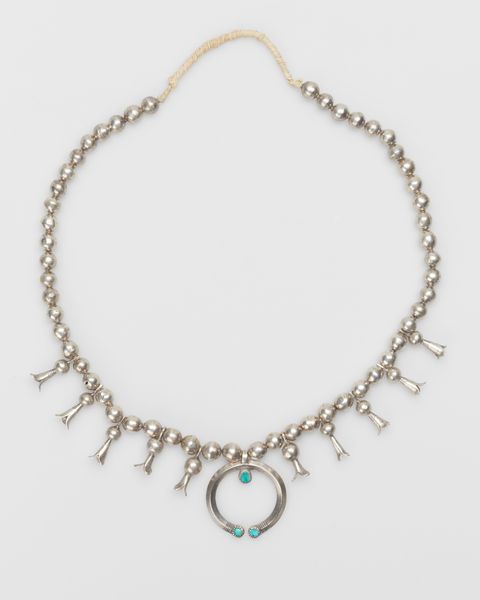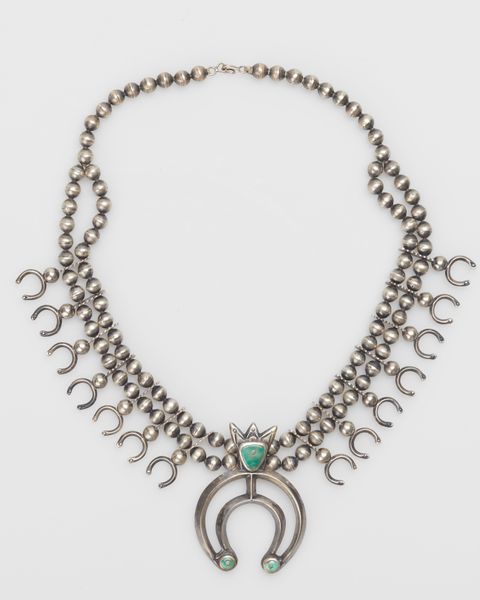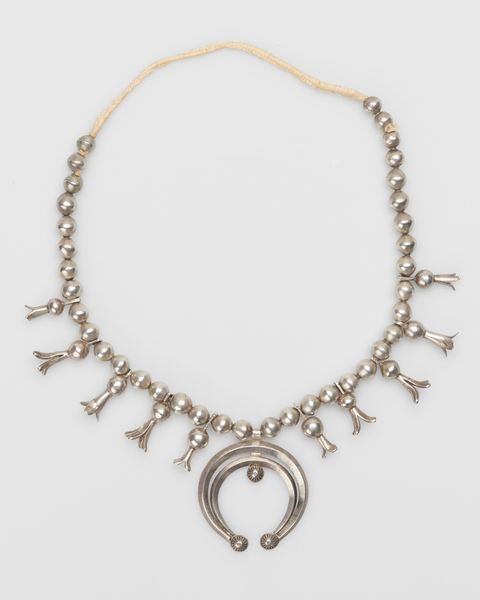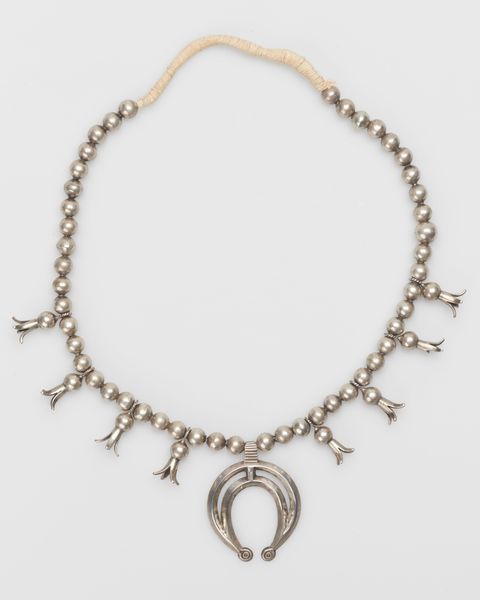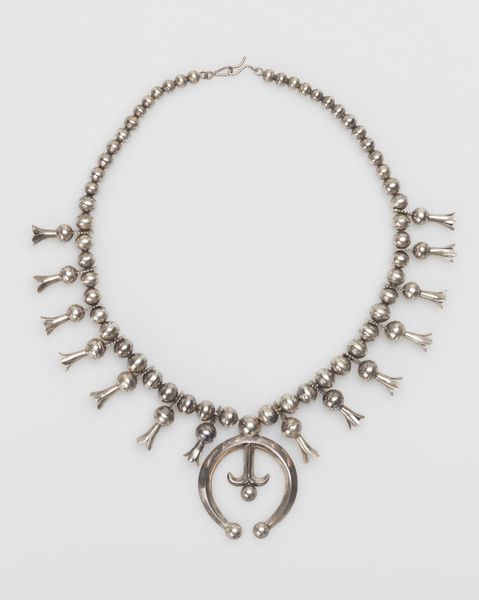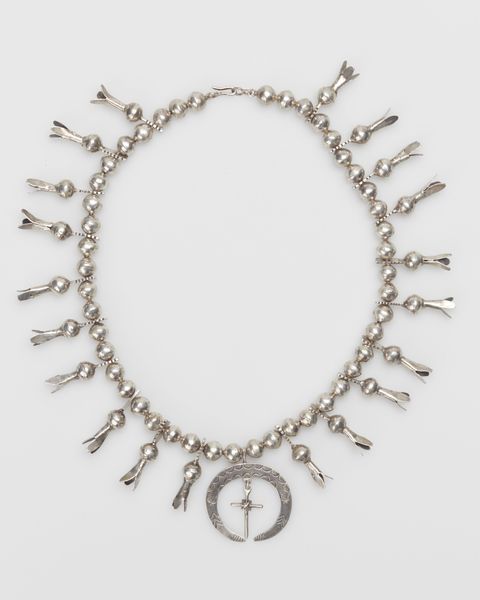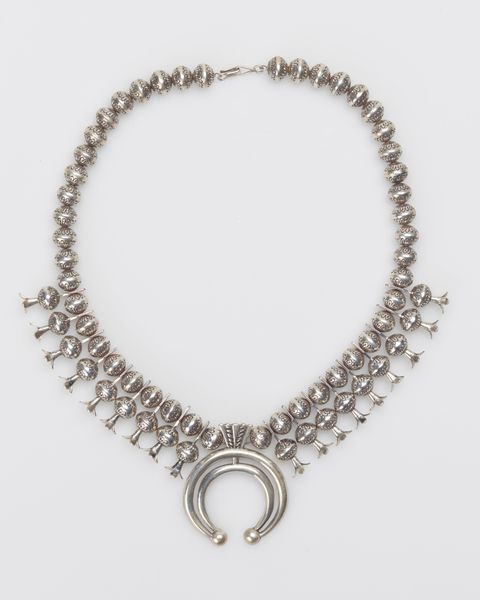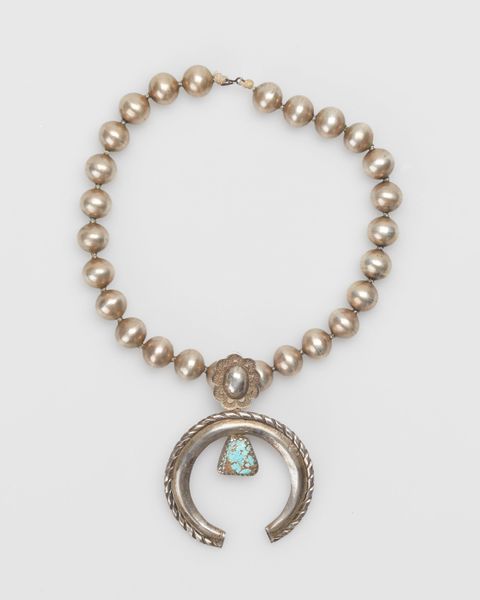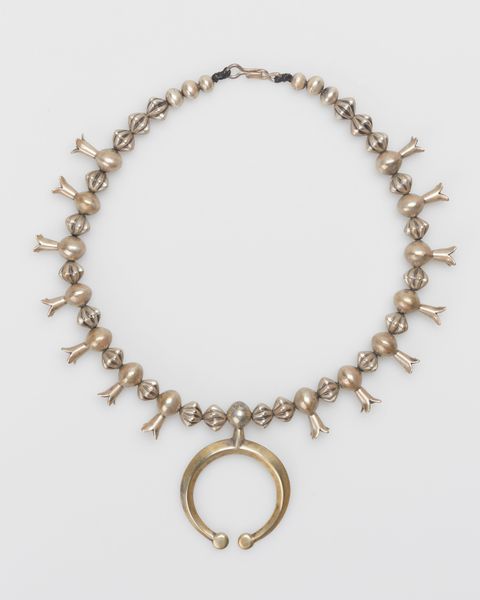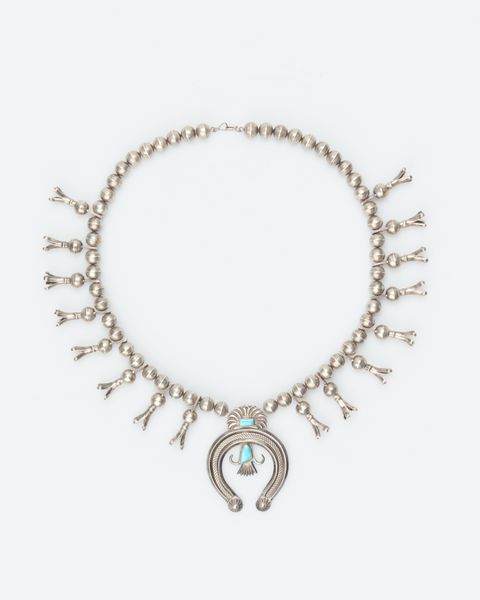
silver, metal
#
silver
#
metal
#
decorative-art
#
indigenous-americas
Copyright: Public Domain
Editor: This silver necklace, made around 1910 by Navajo (Diné) artists, has such a cool, almost industrial feel to it. The uniformity of the beads is mesmerizing, like little metal orbs. How do you see this piece? Curator: I find it fascinating to consider the production process of something like this. We have silver, obviously sourced and then worked, possibly traded. What kind of tools were used? What was the division of labor in its creation? It challenges the idea of “art” as purely aesthetic. This object had purpose within a specific community and economy. Editor: So it's more than just decorative? Curator: Precisely! We need to look at how it circulated – who wore it, for what occasions? Navajo silverwork was often traded with other tribes or non-Native populations. Its materiality and the labor involved speak to complex interactions of cultures and economic systems. The turquoise stone would also have had its own cultural and economic value. Editor: I didn’t even think about where the silver came from. It makes you consider the extraction of resources, the act of silversmithing itself, and its trade. How different all that is from what you see hanging in most galleries! Curator: Exactly. Focusing on the materials and process deconstructs traditional art hierarchies. What seems like a beautiful ornament is embedded in a web of labor, trade, and cultural exchange. Editor: That definitely gives me a fresh appreciation. Thanks to looking closely at the process, this piece now feels like an artifact of culture!
Comments
No comments
Be the first to comment and join the conversation on the ultimate creative platform.
